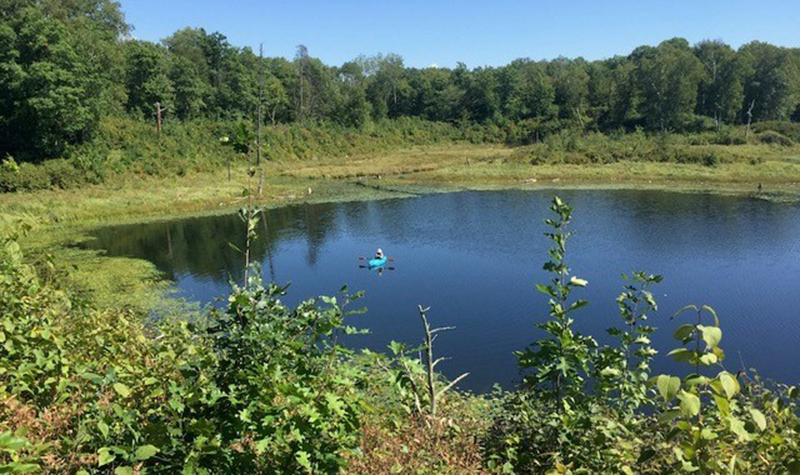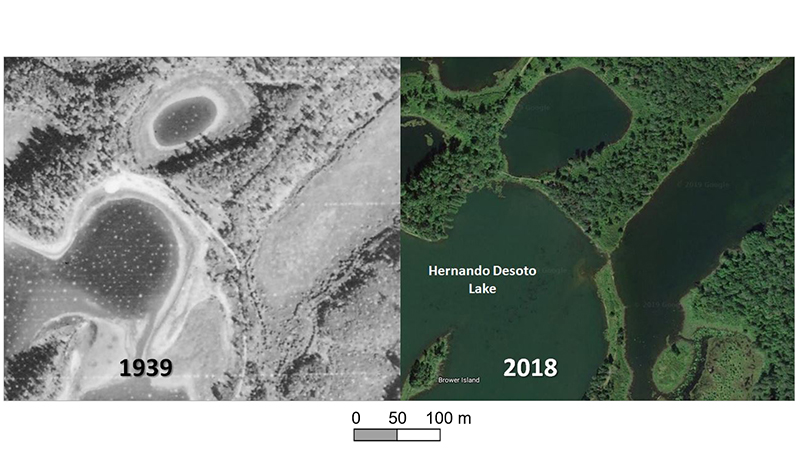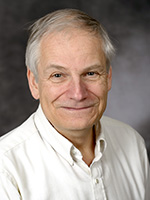Blazing the trail
New UND research examines water quality in Itasca waterways

Brianna Speldrich starts a day of research by packing a kayak to the end of a trail, blazing a new trail through thorns, brush, mosquitoes and ticks to a remote lake at Itasca State Park, launching the kayak and paddling to the middle of the lake.
Then her work begins. A second-year master’s student in geology from Aitkin, Minn., Speldrich samples water from ponds and lakes, measuring pH, dissolved minerals, and other factors to understand the “water budget” of Itasca State Park, which contains more than 400 lakes and wetlands.
Speldrich is blazing a trail in more ways than one. Her research focuses on modeling groundwater and surface water interaction to estimate “water budgets.” This is essential for determining how climate and land use changes affect the waterways, and establishes a baseline for future research.
“This is decades-long, exciting work,” said Phil Gerla, associate professor at UND’s Harold Hamm School of Geology & Geological Engineering and Speldrich’s advisor. “We’re working to understand how groundwater flows and affects Itasca waterways.”
That work, he said, could help predict the resiliency of lakes and other waterways and help us understand how to better manage lakes and wetlands.

Headwater of headwaters
Itasca State Park surrounds the headwaters of the mighty Mississippi River, which begins in Minnesota and winds 2,300 miles to the Gulf of Mexico. Visitors enjoy crossing the rock dam, which separates Lake Itasca from the beginning of the Mississippi, a knee-deep stream that’s about 18 feet wide most summers.
It hasn’t changed much since the source of the Mississippi was discovered in 1832.
“Our work lies in the headwaters of the headwaters of the Mississippi,” said Speldrich. “People don’t always realize that groundwater is connected to lakes and streams. Not everyone realizes how small lakes contribute to the area or see the benefits of wetlands. Changes in one affect the others.”
“Groundwater is kind of a wild card,” Gerla said. “It’s hard to observe and measure, but it can provide resilience to lake levels and fisheries. Brianna is testing methods that will help us understand the balance of water – where it comes and goes – and finding tools to quantify it. This will help us predict how changes in the landscape affect water.”
Gerla said that even a few years of drought can notably affect lake levels and change ecology.

“For example, fish can be lost entirely in shallow lakes that freeze all the way to the bottom in the winter,” Gerla said. “Drought opens wide shorelines, allowing weeds to move in and forcing valuable species out.” He added that in the Dust Bowl of the 1930s, which caused severe drought, today’s lakes were just puddles.

“If you go back 4,000 to 8,000 years, there was a warm period – the prairie period – temperatures in Itasca were about 9 degrees Fahrenheit warmer than today and precipitation was 25 percent lower,” Gerla said. “Back then, Itasca was prairie with very few trees. About 4,000 years ago, the climate cooled and the forest returned.”
Speldrich is working to figure out the intricacies of the watershed. She spent the winter developing a computer simulation that can characterize how lakes and wetlands interact with groundwater. She will continue taking water samples this summer which will be used to help verify her model.
“Our waterways are really sensitive to changes in hydrology,” she said. “Changes affect lakes and wetlands, which can recharge groundwater, improve water quality, and offer wildlife habitat. Higher in the watershed, where lakes and wetlands recharge groundwater, there are fewer minerals. Lower in the watershed, where groundwater discharges to lakes and wetlands, there are more dissolved minerals. She added that this is because groundwater has far more dissolved minerals than precipitation.
“The water is pristine,” she said. “It’s hard to get samples, but it’s worth it when the kayak is in the water. That’s my favorite part. It’s so quiet, and I often wonder how long it’s been since someone hiked or kayaked there. It’s worth all the work of blazing a trail.”


